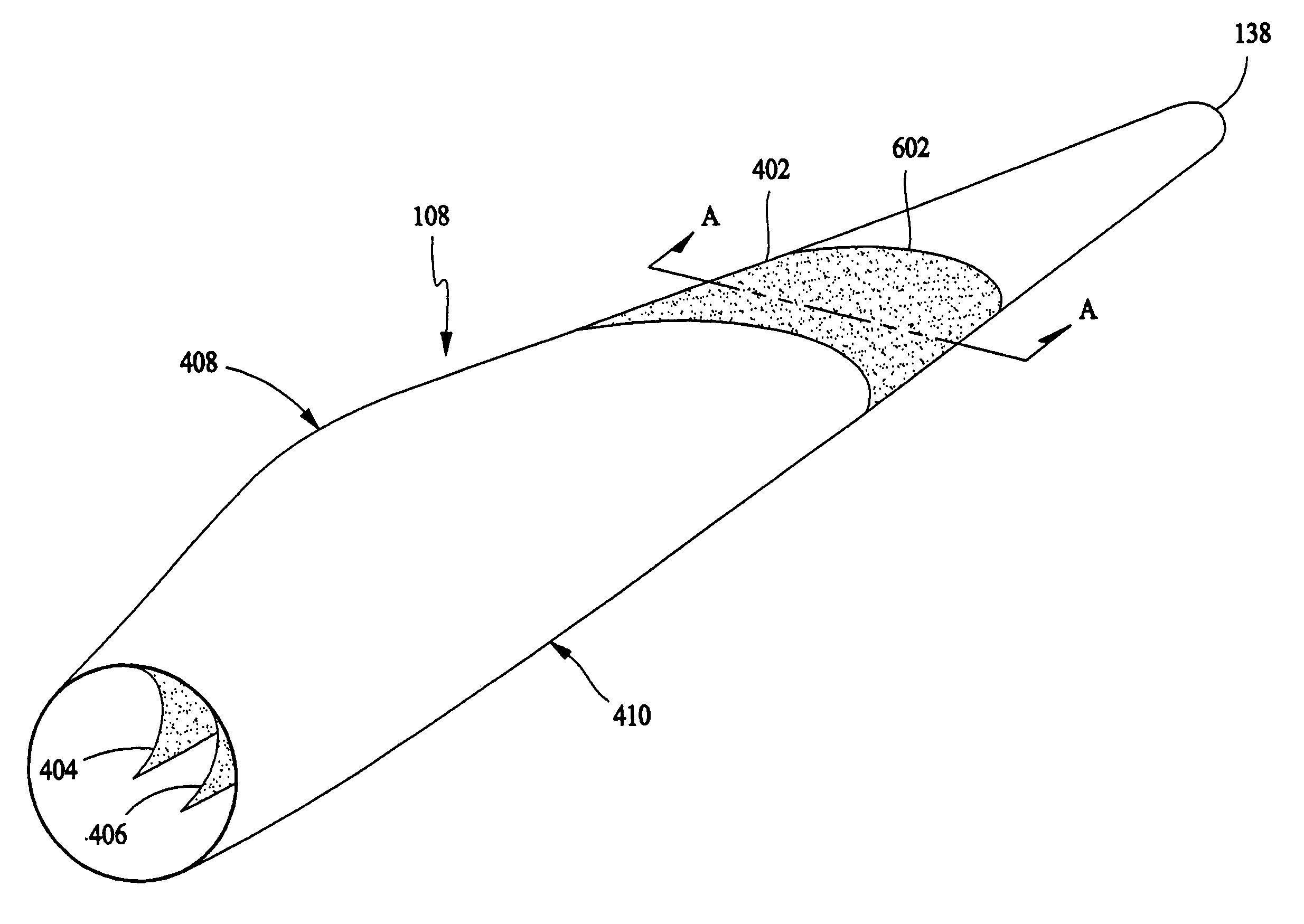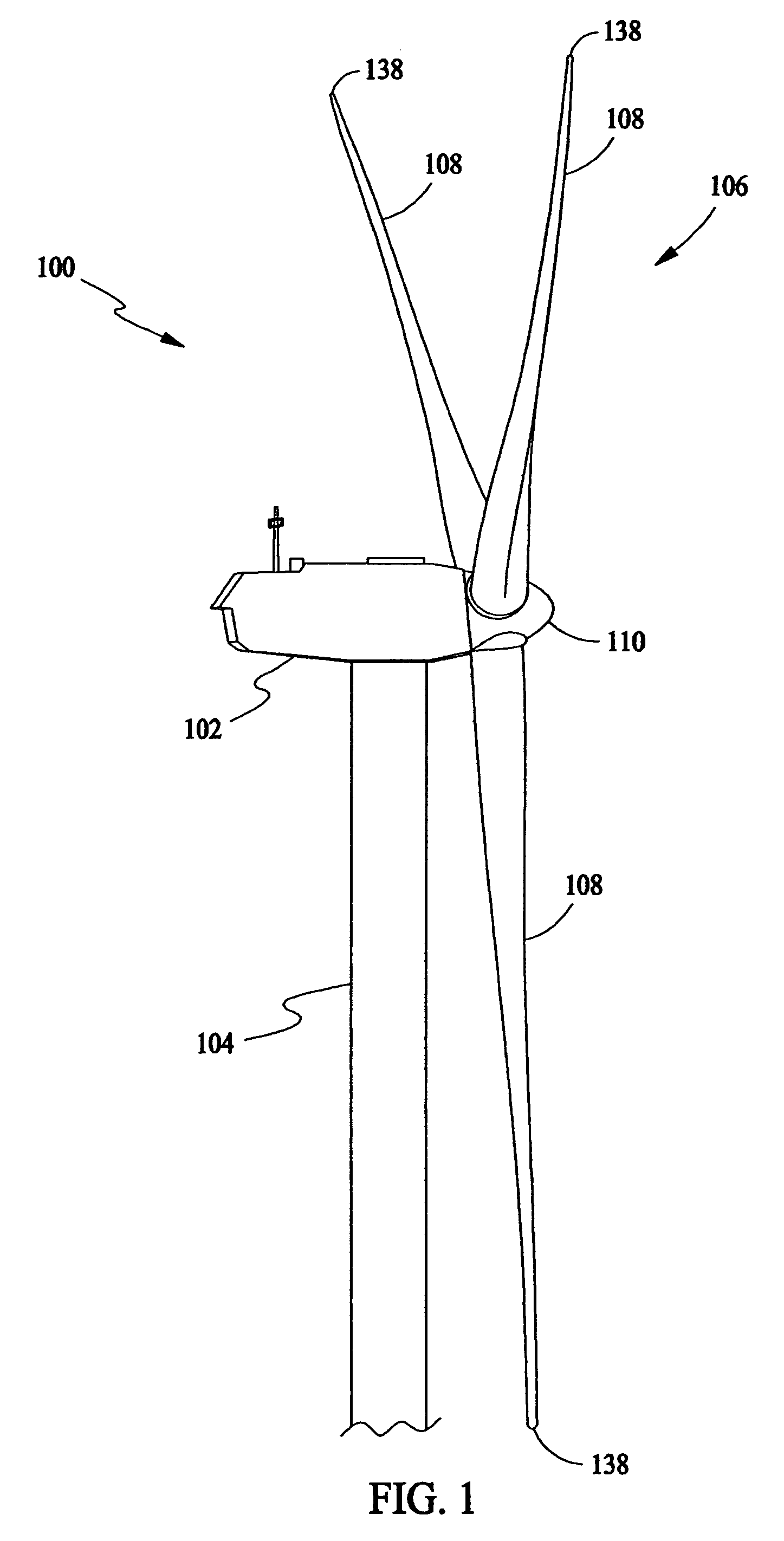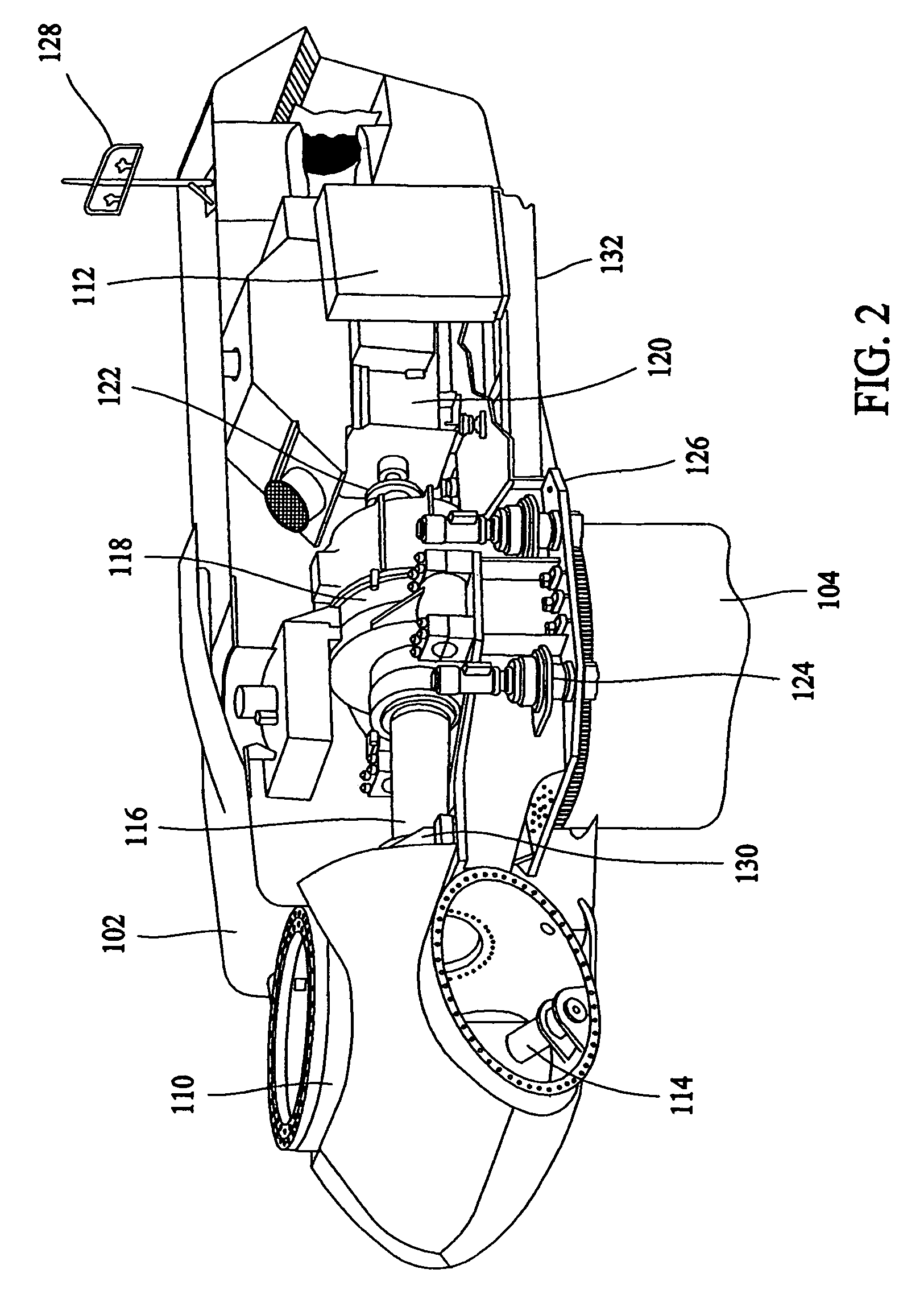Methods and apparatus for twist bend coupled (TCB) wind turbine blades
a technology wind turbine blades, which is applied in the field of wind turbine blades, can solve the problems of low research devoted to the study of the reaction of laminates used in the manufacturing of rotor blades to shear fatigue and other problems, and achieve the effect of increasing the energy capture power coefficient of the wind turbin
- Summary
- Abstract
- Description
- Claims
- Application Information
AI Technical Summary
Benefits of technology
Problems solved by technology
Method used
Image
Examples
Embodiment Construction
[0020]In some configurations and referring to FIG. 1, a wind turbine 100 comprises a nacelle 102 housing a generator (not shown in FIG. 1). Nacelle 102 is mounted atop a tall tower 104, only a portion of which is shown in FIG. 1. Wind turbine 100 also comprises a rotor 106 that includes one or more rotor blades 108 attached to a rotating hub 110. Although wind turbine 100 illustrated in FIG. 1 includes three rotor blades 108, there are no specific limits on the number of rotor blades 108 required by the present invention.
[0021]In some configurations and referring to FIG. 2, various components are housed in nacelle 102 atop tower 104 of wind turbine 100. The height of tower 104 is selected based upon factors and conditions known in the art. In some configurations, one or more microcontrollers within control panel 112 comprise a control system are used for overall system monitoring and control including pitch and speed regulation, high-speed shaft and yaw brake application, yaw and pu...
PUM
 Login to View More
Login to View More Abstract
Description
Claims
Application Information
 Login to View More
Login to View More - R&D
- Intellectual Property
- Life Sciences
- Materials
- Tech Scout
- Unparalleled Data Quality
- Higher Quality Content
- 60% Fewer Hallucinations
Browse by: Latest US Patents, China's latest patents, Technical Efficacy Thesaurus, Application Domain, Technology Topic, Popular Technical Reports.
© 2025 PatSnap. All rights reserved.Legal|Privacy policy|Modern Slavery Act Transparency Statement|Sitemap|About US| Contact US: help@patsnap.com



